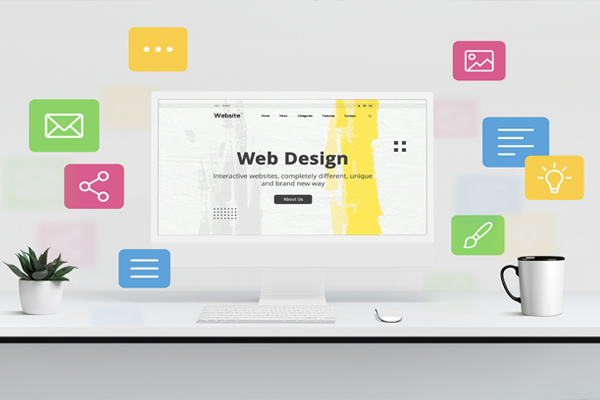
7 Steps Involved In Website Development
- by Joyce Thomas
The website design and development process includes several steps that ensure the creation of an organized website. The steps can vary according to individual preferences and project requirements. But here are seven steps that are involved in the website design process:
1. Gathering Information & Goal Identification
This is the first and essential step because this phase involves collecting relevant and valid information about the website, like the website’s purpose, target audience, goals, and desired features. It includes conducting research, client interviews, and competitor analysis to understand the project’s scope and requirements comprehensively.
2. Planning & Scope Of Your Project
The second step involves creating a detailed website plan, outlining the site structure, navigation, and overall user experience. Considerations such as content organization, wireframes, sitemaps, and technology choices (e.g., CMS platforms, frameworks) are made. This is the stage where the website’s sitemap is created, which includes all the main topics the website should feature. Constant collaboration with your clients is essential so you, as the website designer, can determine what exactly is required.
3. Design & Creation
The design phase focuses on creating the visual aspects of the website. It involves creating mockups or prototypes that reflect the intended look and feel of the final product. Design elements such as color schemes, typography, imagery, and branding are incorporated. Responsive design principles are also considered to ensure the website is optimized for different devices and screen sizes. At this stage, it is paramount that you remain in touch with your clients so you can bring to screen what they envision.
4. Content Creation
Once the design is approved, content creation begins. This involves writing and gathering relevant copy, images, videos, and other media used on the website. Content should be aligned with the website’s goals, target audience, keywords, and search engine optimization (SEO) requirements. Attention to readability, accessibility, and engaging copy is essential to convey the intended message effectively.
5. Development of the Website
During this phase, web developers convert the design into a working website. They utilize programming languages such as HTML to construct the website’s framework, and they may employ Content Management Systems or custom-made solutions to simplify content management processes.
6. Testing and Quality Assurance
Before the website goes live, thorough testing ensures its functionality, compatibility, and performance across browsers, devices, and operating systems. This includes checking for broken links, responsiveness issues, or functional errors. Usability testing may also be conducted to gather feedback on the user experience and make necessary improvements.
7. Deployment and Maintenance
This stage involves transferring the website files to the server and configuring domain settings for the site to be accessible online. Regular maintenance and updates are crucial to keep the website secure, up-to-date, and running smoothly. Ongoing monitoring, backups, and content updates are typically part of website maintenance. Effective communication and collaboration among designers, developers, content creators, and clients throughout the process are vital to ensuring a successful website design project.
Conclusion:
Website development is an essential process to which one needs to pay close attention. Creating a reliable, user-friendly, and accurate website goes a long way in increasing traffic and engagement with your target market. By doing so, you successfully foster a relationship with your target audience, which would inevitably lead to more clicks on your website from potential customers. Contact Codelattice, your partner, to design your website. Contact us at info@codelattice.agency or call +971 55 4571230
The website design and development process includes several steps that ensure the creation of an organized website. The steps can vary according to individual preferences and project requirements. But here are seven steps that are involved in the website design process: 1. Gathering Information & Goal Identification This is the first and essential step because…